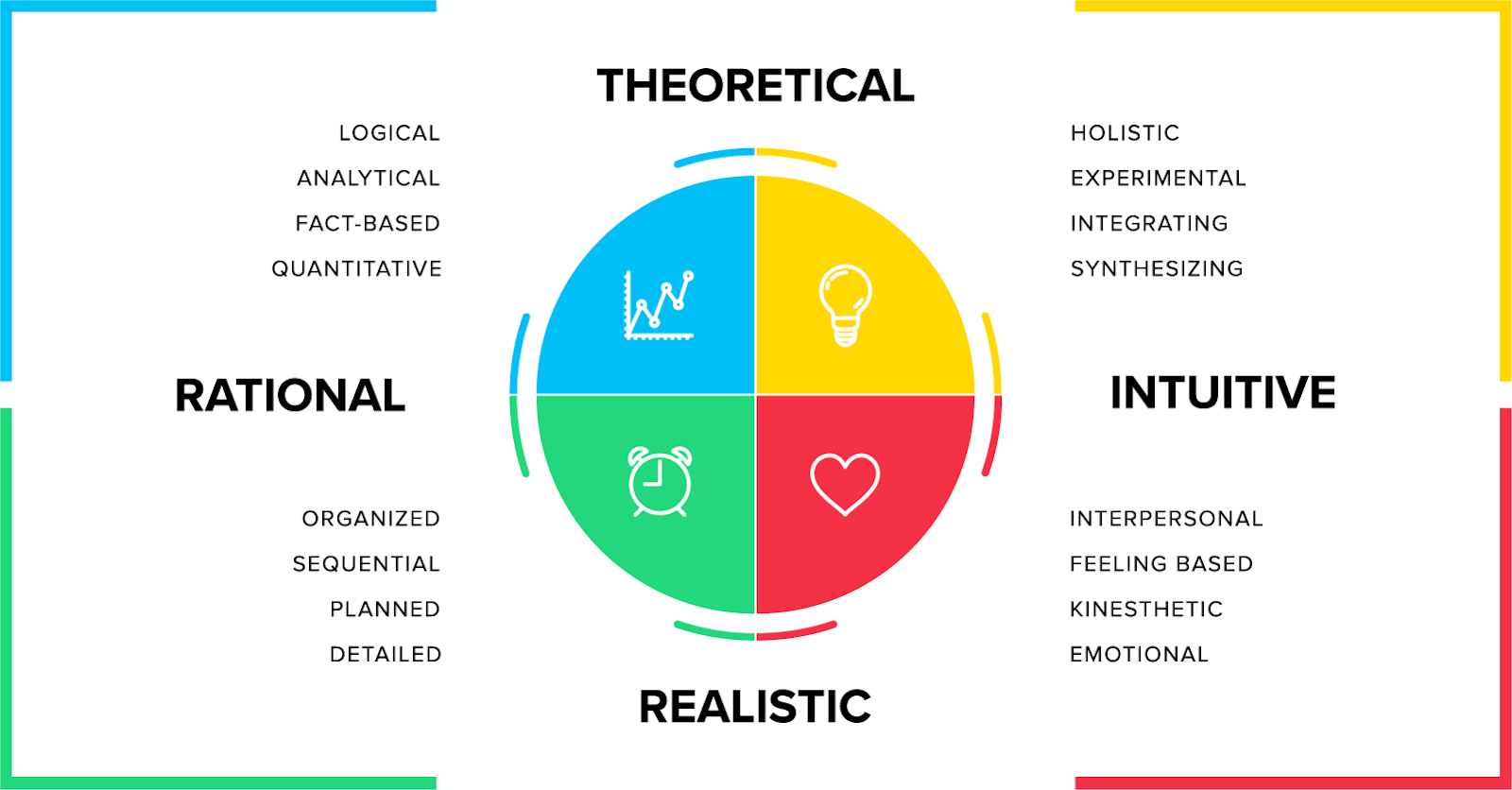
Adapting to Change: A Practical Team’s Guide
Changes can be deemed disruptive and stressful for many in the workplace. Yet, as history tells us, change is a constant in this ever-evolving world.
The way you deal with change can make or break a situation.

Identify your style of thinking and use the respective expert-recommended practices to navigate changes in the workplace.
Our Different Approaches to Change Management
Hermann’s Whole Brain Approach to Change Management
Blue Quadrant: Logical and analytical, focused on data and bottom-line impacts. Uncomfortable with emotional aspects of change.
Green Quadrant: Prefers planned, organised, and detailed change. Feels insecure with new, untested approaches.
Red Quadrant: Interpersonal and emotional. Seeks dialogue about change. May react emotionally before understanding all facts.
Yellow Quadrant: Embraces holistic and intuitive change. Excited by new ideas but concerned about potential loss of freedom.
Best Practices for Navigating Management Change
Make the Case for Change
Clearly communicate why changes are necessary to mitigate possible interferences brought about by changes. However, to achieve maximum effectiveness, consider tailoring the way you convey this message according to the various thinking preferences of your team members, as shown below:
Blue Quadrant: Share facts and research supporting the change.
Green Quadrant: Outline available resources and the implementation process in detail.
Red Quadrant: Align the change with organisational values and address employee feelings.
Yellow Quadrant: Illustrate the big picture and the underlying reasons for the change.
Set Clear Goals and Metrics
Setting measurable goals will further communicate the objective of the change clearly, helping your team embrace it more easily. Consider the different ways to convey these goals as deemed appropriate:
Blue and Green thinkers: Prefer hard numbers
Red thinkers: Focus on the human impact
Yellow thinkers: Need to understand the rationale behind chosen metrics or goals
Build a Supportive Culture
To help different team members seamlessly adapt to changes, build these cultures accordingly:
Red Quadrant: An environment that encourages risk-taking, innovation, and open communication
Blue Quadrant: Evaluations of data and progress based on integrity
Yellow Quadrant: Fosters big ideas
Green Quadrant: A culture that implements better processes
Use the Right Tools
Having the right digital tools and processes are fundamental for successful change management.
Green Quadrant: Project management systems that show order or clear processes
Blue Quadrant: Systems that generate data and analytics
Red Quadrant: Management tools that outline different roles and how each one contributes to the project
Yellow Quadrant: Tools that enable comprehensive understanding of the change’s purpose
Check out more of our blogs below to gain expert tips for personal and organisational development!